
 27 Images
To view all the colour images associated with this article click on the camera above.
|
|
| Georgetown Loop Railroad
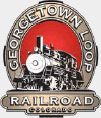 The three-foot narrow gauge Georgetown Loop Railroad is located in the Rocky Mountains about 40 miles west of Denver, Colorado. There are currently two steam locomotives available for operation along their 3 1/2 mile route. On the day of my visit, during the first week of September 2006, both were out of service, unfortunately. Number 12 had suffered a broken axle earlier while Number 9 damaged her eccentric a few days before my arrival. Number 9 should be operational by the time you read this, but Number 12 will most likely be out of service for the season. ( Here is a link to a recent photo of Number 9. ) If you wish to see narrow gauge steam in operation working up a 3 1/2 percent grade the Georgetown Loop Railroad would be the place to visit. The sight should be spectacular! The three-foot narrow gauge Georgetown Loop Railroad is located in the Rocky Mountains about 40 miles west of Denver, Colorado. There are currently two steam locomotives available for operation along their 3 1/2 mile route. On the day of my visit, during the first week of September 2006, both were out of service, unfortunately. Number 12 had suffered a broken axle earlier while Number 9 damaged her eccentric a few days before my arrival. Number 9 should be operational by the time you read this, but Number 12 will most likely be out of service for the season. ( Here is a link to a recent photo of Number 9. ) If you wish to see narrow gauge steam in operation working up a 3 1/2 percent grade the Georgetown Loop Railroad would be the place to visit. The sight should be spectacular!
History of the Railroad
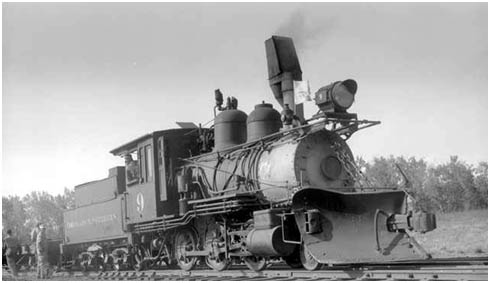
Colorado & Southern Number 9, a 3 foot gauge 2-6-0 Mogul, at Sheridan Junction, Colorado - 15 Oct 1938 Otto Perry - Denver Public Library call number OP-6051. This locomotive is now operational on the Georgetown Loop Railroad.

|
Passengers on the Georgetown Loop Railroad often wonder why, even in the 1880's, anyone would have built a railroad just between Georgetown and Silver Plume. The simple answer is that they didn't. What we know today as the Georgetown Loop Railroad was actually the tail end of a rail line that ran 54 miles from Denver to Silver Plume and was once projected to go over Loveland Pass and on to Breckenridge and Leadville, another 50 miles.
Besides its main focus of serving the very rich silver-producing Clear Creek Valley by hauling ore out and supplies in, the railroad also served as a transportation and communication lifeline for the mountain towns, carrying passengers and mail.
The Georgetown Loop's story began in 1865 with the formation of the Colorado & Clear Creek Railroad by William A.H. Loveland and Henry M. Teller. Construction of the narrow gauge line up Clear Creek Canyon did not begin until 1871, under the name Colorado Central.
It took six long years to get from Golden to the present-day junction of highway I-70 and US 6. On 13 Aug 1877 the line reached Georgetown. By 1870 a branch had also reached Blackhawk and Central City.
Construction did not continue until 1881, when the Georgetown, Breckenridge & Leadville Railroad was incorporated. They planned to build from Silver Plume over Loveland Pass to Leadville. Leadville was the desired destination of many of Colorado's narrow gauge railroads due to its silver-mining boom. The Colorado Central was one of two railroads owned by the Union Pacific building towards Leadville.
The first problem - Silver Plume lies two miles up the valley at over 9,100 feet in elevation, 650 feet higher in elevation than Georgetown. Building track straight up the valley would result in a grade of over 6 1/2 percent ( meaning the track would rise six feet in elevation for every 100 feet of forward travel. ), which was considered too steep for a normal railroad.
| | 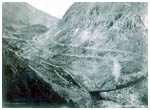
The Georgetown Loop in Clear Creek Canyon 1880-90. The trees have since re-grown so that this view is no longer possible - Circa 1880-90 William Henry Jackson - Denver Public Library call number WHJ-1469.
|
For the line to Silver Plume, the surveyors and engineers, led by Robert Blickensderfer, laid out a route that looped over itself and then wound around both sides of the valley, crossing Clear Creek four times. Now the average grade of the 4 1/2 miles of track would be 3 1/2 percent, and one of the engineering marvels of the 19th century was created. It took three years of sporadic construction to reach Silver Plume on 10 Mar 1884.
A wood frame depot was constructed when the line reached Silver Plume. The depot still stands as the Georgetown Loop's Silver Plume depot. All of the work building the railroad was done by hand, including blasting apart the many large boulders in its path and building all of the stone retaining walls that line the grade.
The most spectacular and well-known feature of the Georgetown Loop is where the track crossed over itself, forming the loop. This occurred on a 300-foot long, 100-foot tall curved iron bridge. The bridge was built just upstream of a rock formation known as the "Devil's Gate" and became known as the "Devil's Gate Viaduct" or just the "High Bridge".
| | 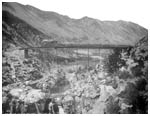
"Devil's Gate" is formed just below the small wooden bridge while a train crosses the "High Bridge" - 1899-1910 Louis Charles McClure - Denver Public Library call number MCC-1394. The rocks forming Devil's Gate no longer exist. Apparently they were destroyed with explosives some time in the past.
|
The High Bridge was built in 1883 by Clark Reeves & Co. of Phoenixville, Pennsylvania, and shipped to Denver on standard gauge flatcars. The bridge parts then travelled the narrow gauge and were assembled in October and November of 1883, but the bridge was not completed until 23 Jan 1884 due to some problems.
Track construction continued for five miles past Silver Plume, to what is now Bakerville along highway I-70, where it stopped for good. By then the UP's other line had already reached Breckenridge and Leadville. That fact, coupled with the immense amount of work needed to get a railroad over Loveland Pass, caused the UP to rethink its plans. In 1898 the track to Bakerville was abandoned, and Silver Plume, 54 miles from Denver, became the end of the line.
From its inception, the Georgetown Loop was seen as a scenic wonder and engineering marvel. The UP promoted the line heavily in timetables and travel brochures, and commissioned photographer William Henry Jackson to photograph the "far famed loop" soon after its completion. His photos could be found in UP ticket offices across the country.
| | 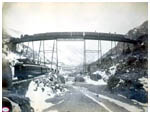
The "High Bridge" over Clear Creek near Georgetown, Colorado. Men stand on top of the freight cars. A passenger train is on the embankment below the bridge while passengers and rail workers stand on rocks near the creek - Circa 1880-90 William Henry Jackson - Denver Public Library call number WHJ-1605.
|
The promotion worked, and tourism became a mainstay of passenger operations over the Loop. At its height, up to seven passenger trains a day were run from Denver to Silver Plume. Many people took a day trip excursion over the line and many postcards, photographs, and books of the Loop were sold as souvenirs over the years.
In 1893, the US Congress repealed the Sherman Silver Purchase Act - an act that supported the West's silver industry - which caused the price of silver to drop. The resulting "Panic of 1893", an economic depression, hit silver mining regions particularly hard.
Mining activity around Silver Plume dropped considerably; so did the railroad's main source of traffic. Tourism took over as the chief revenue source since the mining interests never fully recovered from the silver crash.
In 1899, the Georgetown Loop's ownership was transferred to the newly-formed Colorado & Southern Railway, which would operate the line for the next 40 years. The C&S continued to promote the Loop as a tourist attraction and haul whatever freight there was along the line. Mining continued throughout the C&S's tenure, though at a much smaller scale than before.
| | 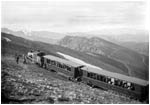
Argentine Central Railway engine with Colorado and Southern passenger cars on summit of Mount McClellan shows a north view of the Rocky Mountains with the narrow gauge track winding up to the summit - circa 1890 Louis Charles McClure - Denver Public Library call number MCC-682.
|
In 1905, another narrow gauge railroad was built in Silver Plume. The Argentine Central Railway branched off the C&S just above the Silver Plume depot and began its climb to the town of Waldorf and the top of Mt. McClellan. Along with serving some mines on its route, the Argentine Central was a tourist attraction, and many people combined a trip over the Loop with a journey to the top of Mt. McClellan. The C&S worked with the Argentine Central, and trains from Denver laid over in Silver Plume long enough for folks to ride the Argentine Central. Never a resounding financial success, the Argentine Central ceased operations in 1918.
The early 1910's saw the beginning of the end for passenger service over the Loop. As automobiles became more available and the state spent more money improving highways, passenger traffic declined. Local residents could take their cars to Denver on a schedule that suited them, and tourists turned to automobile and bus tours.
The number of trains running to Silver Plume gradually decreased until there was just one train a day from Denver. In 1927, even that train, which carried the mail, was dropped from the schedule; the line up Clear Creek Canyon became freight only. The remaining freight turned to trucks, and by the late 1930's the railroad decided to abandon the Georgetown Loop.
In November 1938, the C&S was given permission to abandon the line from Silver Plume to Idaho Springs. Then, as today, a railroad must receive permission from the Federal Government to abandon a rail line, and at times it can be a lengthy process. The C&S first filed to abandon the line in 1936. A final freight train ran as far as Empire on 30 Jan 1939 and dismantling of the line began shortly thereafter.
The scrappers began pulling up the rails in Silver Plume and by March 1 they had reached the Loop's High Bridge. By the end of March all of the track west of Idaho Springs had been removed. The High Bridge was finally torn down in June of 1939. The engineering wonder that had attracted tourists for over 50 years was sold to the Silver Plume Mining & Milling Company for $450 to be used as mine supports.
The line from Golden to Idaho Springs outlasted the Loop by a little over two years. The last freight train ran to Idaho Springs on 4 May 1941 and just over two months later, on 8 Jul 1941, the last scrap train pulled into Golden. The US Highway 6 "Tunnel Route" was built through Clear Creek Canyon after the railroad was torn up.
The narrow gauge route between Denver and Golden survives as a standard gauge line operated by the Burlington Northern Santa Fe to serve the Coors Brewery and other customers in Golden.
Following the abandonment, the grade of the Georgetown Loop remained mostly intact. Sections of it were passable by Jeep. The idea of rebuilding the Loop had its origins in 1959 when Stanley R. Wallbank donated the Lebanon-Everett silver mine and 100 acres of land to the Colorado Historical Society. In 1967, the society announced its plans for what would become the Georgetown Loop Historic Mining and Railroad Park, which would include the reconstructed Georgetown Loop Railroad and the Lebanon Silver Mine.
Over the years, the CHS acquired over 900 acres of land in the valley between Georgetown and Silver Plume for the Park. Planning involved working with the Colorado Department of Transportation to relocate the route of highway I-70 to its current location along the side of Republican Mountain, above the track of the Loop. The highway was originally planned to run straight up the valley, through the Park and the Loop's railroad grade.
By November 1972, some initial work on reconstructing the railroad had been started. The Denver & Rio Grande Western Railroad donated five narrow gauge cars to the CHS, Loveland Ski Associates had donated the original Silver Plume depot to the project, and the depot had been moved from the path of I-70 to near its current location.
Reconstruction began in earnest in 1973 as a number of events came together: an operator was found for the railroad, rail was donated, and a construction force materialized.
That year Lindsay and Rosa Ashby and Dave Ropchan, part of a group operating a tourist railroad in Central City, reached an agreement with the CHS to help rebuild and then operate the Georgetown Loop Railroad. The partnership would last over 30 years, until the end of the 2004 season, and see the Loop completely rebuilt and turned into a successful tourist railroad.
In the spring of 1973, a U.S. Navy Reserve Mobile Construction Battalion ( "Seabees" ) was looking for a section of railroad to build as a training exercise. Co-incidentally, the UP had donated some 2 1/2 miles of rail to the project from a coal mine spur on its Brighton-to-Boulder branch. The Seabees and the railroad's operators worked through the summer to remove the track material from the mine spur and haul it to Silver Plume. Track was laid in the Silver Plume yard and work on the grade began.
In the summer of 1974, the first mile and a half of track was completed and the first train, a three-car freight powered by former International Railway of Central America steam locomotive Number 44, operated in late August. Regular passenger service began on 21 Jun 1975. By 1979 the track reached the west end of the High Bridge. The Lebanon Silver Mine opened for tours in 1978, allowing visitors to get a feel for the railroad and the reason it was built.
In 1982, the CHS received a grant to continue construction of the Loop. This $1-million grant from the Boettcher Foundation, in honour of E. Warren Willard, a former partner of Boettcher & Company and a member of the Colorado Historical Society's board of directors, would be used to finance the reconstruction of the Devil's Gate High Bridge.
Construction of the new High Bridge began in June 1983 and was completed on 25 Sep 1983. Track was constructed across the bridge in 1984 and the first locomotive crossed the bridge on 1 Jun 1984 as crews continued to build track down the valley and back under the High Bridge. The bridge was dedicated on Colorado Day ( August 1st ) 1984. In 1985, the Morrison Valley Center, the Georgetown Loop's Devil's Gate station, was dedicated and trains were once again operating over the complete Georgetown Loop.
Like the original line, the rebuilding of the Georgetown Loop was initially planned to go past the current end of track. The CHS had planned to extend the line past its present end at Devil's Gate all the way into Georgetown. Logistical problems, such as crossing a highway, and the fact that houses had been built on the right-of-way, made the extension unfeasible. Today the Loop consists of 3 1/2 miles of track, between Silver Plume and Devil's Gate.
The 2006 season marks the 32nd year of operation over the rebuilt Georgetown Loop and the second year for current operator Railstar - The Colorado Time-Table Llc., PO Box 149, Niwot, Colorado, USA, 80544.
Re-Construction of the Loop
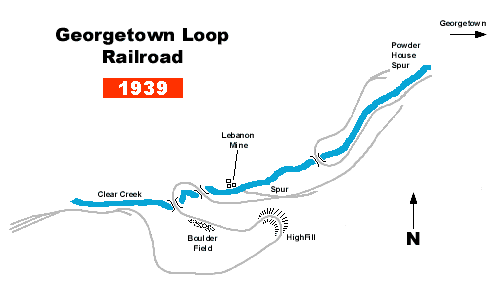
Georgetown Loop Equipment
Steam Locomotive Number 9 - Colorado & Southern Number 9 is a 2-6-0 Mogul built in 1884 by Cooke Locomotive Works of New Jersey. The engine was rebuilt by the Colorado & Southern in 1901 and again in 1917 so very little remains of the original loco. It was used on the Silver Plume line and the South Park line until the closure of the Silver Plume line in 1927 when it was used extensively on the South Park line from Denver to Leadville. In 1939 it went to the Chicago Worlds Fair then was stored until 1948 and displayed at the 1948 Chicago Railroad Fair for two years. Back into storage following that until 1957 when it was leased to the Black Hills Central and moved to Hill City, South Dakota. In 1988 the loco was donated to the Colorado Historical Society and moved to Silver Plume for eventual restoration. Finally, in 2004, Uhrich Locomotive Works of Strasburg, Colorado, began returning her to operational condition with first steam-up in 2006.
Steam Locomotive Number 12 - This engine came from the Kahului Railroad of Hawaii on the Island of Maui where it was used to haul sugar cane. It is a 2-6-2 Prairie built in 1928 by Baldwin. Its tender is known as a "whaleback" tender designed for greater visibility when backing up. It operated there until 1968 when it was sold and returned to the mainland. It was rebuilt in 1988 with a new boiler operating at the Silverwood theme park in Idaho until the Colorado Historical Society purchased it in 2005.
Diesel Locomotive Number 21 - This circa 1940 44-ton General Electric unit rebuilt with Cummins diesel engines riding on just two axles is used as back-up for the steam locomotives.
Coach No. 76 - This car was constructed in 1900 for the Colorado & Southern by American Car & Foundry in St. Charles, Missouri. Retired in 1941 it is the last of only two remaining. It was restored by the Colorado Artifact Conservation Center at Ordway, Colorado and moved to Silver Plume in 2000.
Baggage-Mail Car No. 13 - The Pullman Car Company built this car in 1880 and it is the only one of its type to run on the C&S. It was also restored at Ordway.
Freight Equipment - Several examples of Denver & Rio Grande Western narrow gauge cars are located on the railroad such as caboose No. 0586, boxcar No. 3582, stockcar No. 5702, and reefer No. 153. Some Rio Grande boxcars and gondolas have been rebuilt into open-air riding cars for the paying passengers.
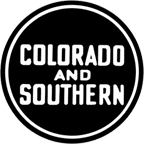 The Future The Future
Three more steam locomotives are expected to be placed in service in the future. Colorado & Southern Number 74, an 1898 2-8-0 Consolidation and International Railways of Central America Number 111, a 1920 2-8-0 Consolidation, are currently undergoing restoration at Uhrich Locomotive Works. No. 111 is expected to be completed in 2007 and No. 74 in 2008. The third engine, C&S Number 60, is now on display at Idaho Springs, Colorado.
  
Georgetown Loop Railroad
P.O. Box 249
Georgetown Colorado USA 80444
1-888-456-6777
info@railstarusa.com
Associated Links
The Narrow Gauge Circle
The Denver & Rio Grande Western narrow gauge
Durango & Silverton
Cumbres & Toltec Scenic Railroad
Colorado Railroad Museum
Denver Public Library Photo Collection

|
|
|